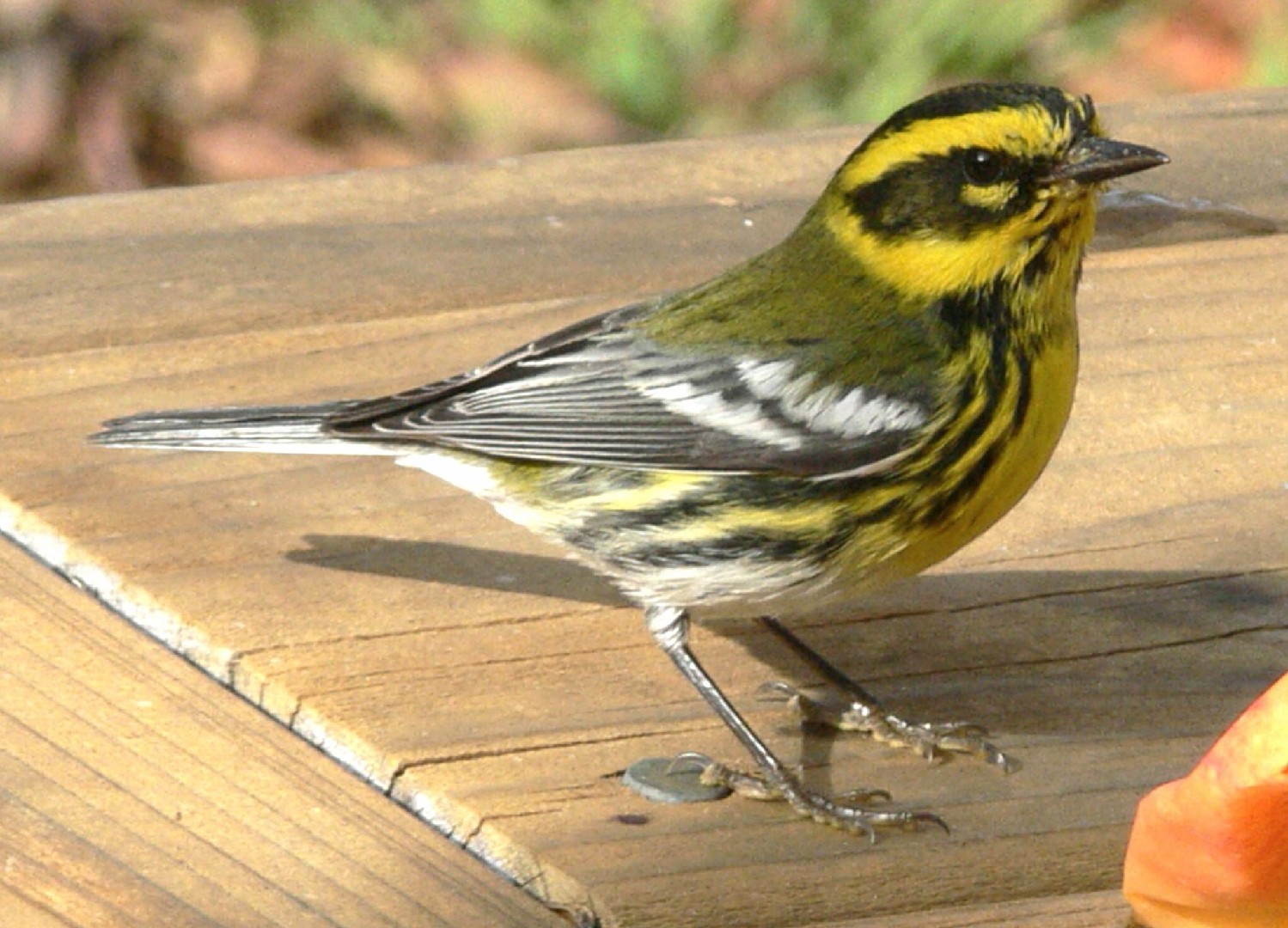Townsend's Warbler
A species of Setophaga Warblers Scientific name : Setophaga townsendi Genus : Setophaga Warblers
Townsend's Warbler, A species of Setophaga Warblers
Botanical name: Setophaga townsendi
Genus: Setophaga Warblers
Content
Description People often ask General Info
Description
Townsend's warbler has a yellow face with a black stripe across its cheeks extending into an ear patch, a thin pointed bill, two white wing bars, olive upperparts with black streaks on their backs and flanks, and a white belly. Adult males have a black cap, black throat and yellow lower breast; females have a dark cap and a yellow throat. Immature birds are similar to females with a dark green cap and cheeks. 
Size
12-13 cm (4.75-5 in)
Colors
Brown
Black
Green
Yellow
Gray
White
Life Expectancy
10 years
Nest Placement
Tree
Clutch Size
3 - 7 eggs
Incubation Period
1 brood
Number of Broods
11 - 14 days
Nestling Period
9 - 11 days
Feeding Habits
Townsend's Warbler predominantly consumes insects, especially caterpillars, ants, bees, moths, beetles, weevils, stinkbugs, and spiders. They forage in the canopy, sometimes lower when feeding young, and eat seeds and leaf galls too. During migration, townsend's Warbler also feeds on nectar, and in winter, on honeydew from scale insects. Some townsend's Warbler eat mealworms, peanut butter, and suet from backyard feeders.
Habitat
Townsend's Warbler are typically found in mature coniferous and mixed forests with a preference for old-growth fir, spruce, and hemlock woodlands. The species occupy environments from sea level to subalpine altitudes, where tall trees and a lush understory are present. During migration, a range of habitats including thickets, woodlands, and even urban parks may be utilized. In winter, townsend's Warbler adapt to various habitats, from oak-coniferous woodlands to montane forests, often at middle to high elevations in areas such as California and Middle America.
Nest Behavior
The female townsend's Warbler selects and investigates potential sites, handles construction solo, and utilizes various plant materials. Nest-building precedes egg-laying, with care for eggs and young divided among the parents, embracing a typical small bird breeding strategy.
Nest Characteristics
Townsend's Warbler's nest is a bulky cup found on a main limb of conifers like spruce or fir at an average height of 36 feet. Materials include bark, conifer needles, twigs, and plant fibers, lined with moss, grass, and hair. Average dimensions are 4 inches across by 3 inches tall, with an inner cup of 2.4 inches wide and 1.5 inches deep.
Dite type
Insectivorous
People often ask
General Info
Feeding Habits
Bird food type
Bird Feeder Type

Small Hopper

Small Tube Feeder
Sounds
Call
Recording location: Panama
Song
Recording location: United States
Song
Recording location: United States
Song
Recording location: United States
Behavior
Townsend's Warbler exhibit unique territorial and breeding behaviors. Upon arrival at breeding grounds, males aggressively establish domains, vying with contenders for days to delineate territories. Pair formation ensues swiftly, lacking a distinct courtship display. During nesting activities, males exhibit behaviors akin to courtship, such as head bowing and wing flaring, which also serve as threats to rivals. Townsend's Warbler vigorously defend their territory, which serves both for nesting and sustenance, and even repel other bird species post-hatching. The presumed monogamous mating system of townsend's Warbler observes occasional deviations, with extra-pair coupling suggested by additional male presences. Both parents invest in offspring care, actively feeding and attending to the young.
Species Status
Not globally threatened.
Scientific Classification
Phylum
Chordates Class
Birds Order
Perching birds Family
New world warblers Genus
Setophaga Warblers Species
Townsend's Warbler 